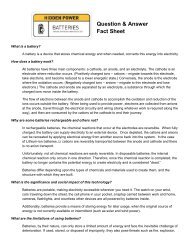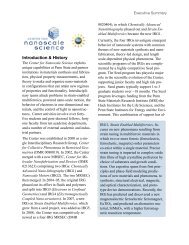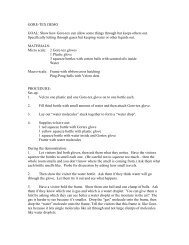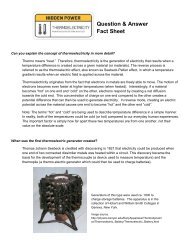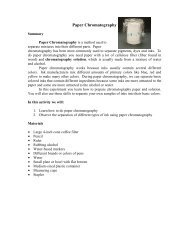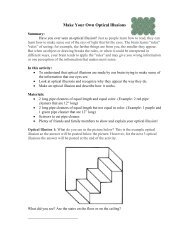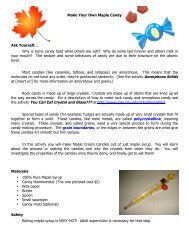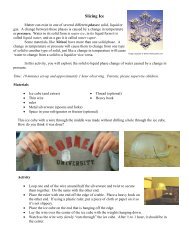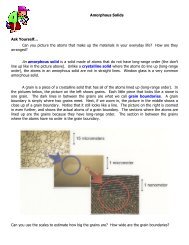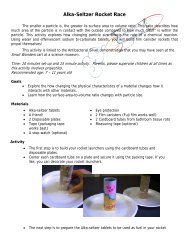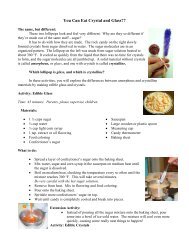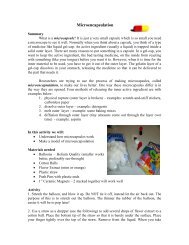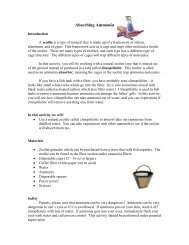Color Mixing with Roy G. Biv - the Center for Nanoscale Science - an ...
Color Mixing with Roy G. Biv - the Center for Nanoscale Science - an ...
Color Mixing with Roy G. Biv - the Center for Nanoscale Science - an ...
Create successful ePaper yourself
Turn your PDF publications into a flip-book with our unique Google optimized e-Paper software.
Our eyes are detectors. When <strong>the</strong> cones are stimulated by light <strong>the</strong>y send signals<br />
to <strong>the</strong> brain. The brain is <strong>the</strong> actual interpreter of color. When all <strong>the</strong> cones are stimulated<br />
equally <strong>the</strong> brain perceives <strong>the</strong> color as white. We also perceive <strong>the</strong> color white when our<br />
rods are stimulated. Unlike cones, rods are able to detect light at a much lower level. This<br />
is why we see only black <strong>an</strong>d white in dimly lighted rooms or while out viewing a star<br />
filled night sky.<br />
In this activity we will:<br />
• Underst<strong>an</strong>d that light is a <strong>for</strong>m of radiation that c<strong>an</strong> be broken into m<strong>an</strong>y<br />
wavelengths; <strong>the</strong>se wavelengths in <strong>the</strong> visible spectrum of light are <strong>the</strong> colors we<br />
see.<br />
• To recognize how we see color. If possible, also to recognize what colors are seen<br />
by colorblind people that may be present.<br />
• Identify <strong>the</strong> three primary colors of light as red, blue <strong>an</strong>d green. Distinguish that<br />
every o<strong>the</strong>r color is caused by <strong>an</strong> overlap of <strong>the</strong> primary colors.<br />
Materials:<br />
• 3 flashlights<br />
• Red, green <strong>an</strong>d blue light bulbs <strong>for</strong> flashlights. ** If available, 3 colored LED<br />
flashlights work <strong>the</strong> best to generate a single wavelength of light. **<br />
• <strong>Color</strong>ed construction paper, o<strong>the</strong>r colored items such as clothing<br />
• White paper or white surface<br />
• 1 5”x7” notecard to make “color mixer” (Piece of cardboard or tagboard <strong>with</strong><br />
a square hole cut in <strong>the</strong> center)



